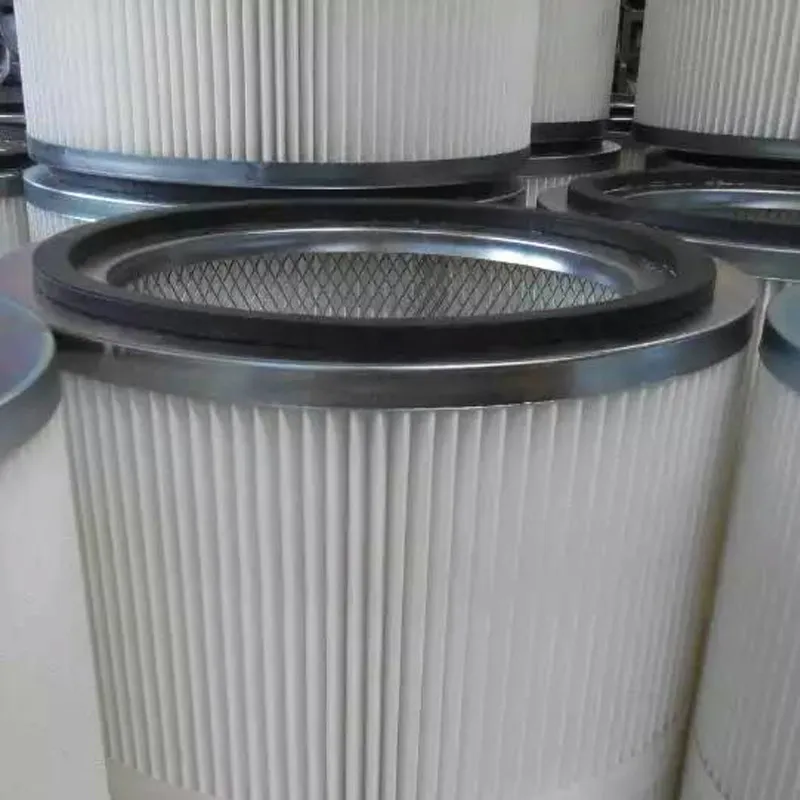 Tel:
+8618931101301
Tel:
+8618931101301
10 月 . 21, 2024 14:33 Back to list
High-Efficiency Dust Extractor Filter Cartridge for Superior Air Quality and Performance
Understanding Dust Extractor Filter Cartridges Essential Components for Clean Work Environments
In various industrial and construction settings, maintaining a clean and safe workspace is paramount. Dust extractor filter cartridges play a critical role in achieving this goal by effectively capturing harmful dust and airborne particles generated during different processes. This article delves into the importance of these cartridges, their working mechanisms, and best practices for selection and maintenance.
What is a Dust Extractor Filter Cartridge?
A dust extractor filter cartridge is a component of a dust extraction system, designed to collect and remove dust and particulate matter from the air. These cartridges are typically cylindrical and made from filter media that can capture different sizes of particles, making them essential for controlling air quality in environments like woodworking shops, metalworking facilities, and construction sites.
The primary function of these cartridges is to ensure that airborne contaminants do not exceed permissible exposure limits, thereby protecting workers' health and reducing the risk of respiratory issues associated with dust inhalation.
How Do Dust Extractor Filter Cartridges Work?
Dust extractor systems operate on a simple principle they create airflow that transports dust-laden air through the filter cartridge. The design of the cartridge allows it to trap dust particles while allowing clean air to pass through. Most cartridges utilize materials like spunbond polyester or cellulose, which are effective at filtering out particles of various sizes.
As the airborne dust travels through the filter, larger particles get trapped on the surface, while smaller particles penetrate deeper into the filter media. Over time, the filter cartridge collects a significant amount of dust and needs to be cleaned or replaced to maintain optimal performance.
Importance of Choosing the Right Cartridge
Selecting the right filter cartridge is crucial for the efficiency of a dust extraction system. Several factors should be considered
dust extractor filter cartridge

1. Particle Size Different applications generate different types of dust. For instance, wood dust is typically larger than concrete dust. Therefore, it’s essential to choose a cartridge designed for the specific size of particles present in your environment.
2. Airflow Requirements Each dust extraction system has specific airflow needs. The filter should be capable of handling these requirements without causing significant pressure drop, which can reduce overall system efficiency.
3. Material Compatibility The filter media must be compatible with the type of dust being collected. For example, filters designed for non-hazardous materials can differ significantly from those meant for hazardous substances, which may require HEPA filters.
4. Durability and Maintenance Consider how often the cartridge will need to be cleaned or replaced. Selecting a durable filter can reduce downtime and maintenance costs in the long run.
Maintenance and Care
Proper maintenance of dust extractor filter cartridges is essential to ensure their longevity and effectiveness. Regular inspection and cleaning are recommended, as a clogged filter can lead to reduced airflow and inefficiency. Many systems are equipped with automated cleaning mechanisms that can help dislodge dust buildup without removing the cartridge.
If a cartridge reaches the end of its life cycle or becomes too contaminated, it must be replaced. Signs that a filter needs replacement include visible dust buildup, reduced suction power, or increased noise from the extraction unit.
Conclusion
Dust extractor filter cartridges are vital for ensuring a safe and clean working environment in various industries. Understanding their function, how to select the right cartridge, and the importance of routine maintenance can dramatically improve air quality and worker safety. By investing in the proper dust extraction systems and cartridges, businesses can not only comply with health regulations but also promote a healthier, more productive workplace for their employees. As industries continue to evolve, advancements in filtration technology will further enhance the ability to manage airborne hazards effectively.
-
How to choose a high-efficiency air filter? Here comes a professional guideNewsOct.21,2024
-
Air filter: multi-field application, protecting fresh airNewsOct.17,2024
-
Carbon air filter: a green guard to protect air qualityNewsOct.16,2024
-
Can activated carbon completely remove indoor odors and pollutants in air purification?NewsOct.14,2024
-
How to filter air efficiently and ensure indoor air quality?NewsOct.12,2024
-
Activated carbon filter: the invisible guard of clean water lifeNewsOct.11,2024

 Email:
Email:





